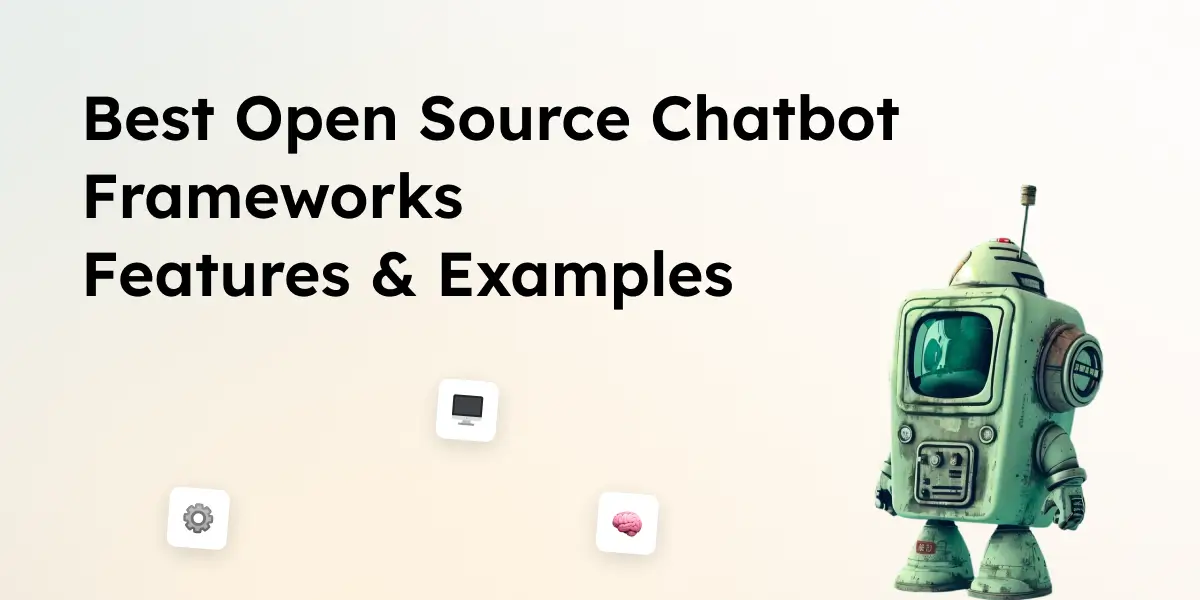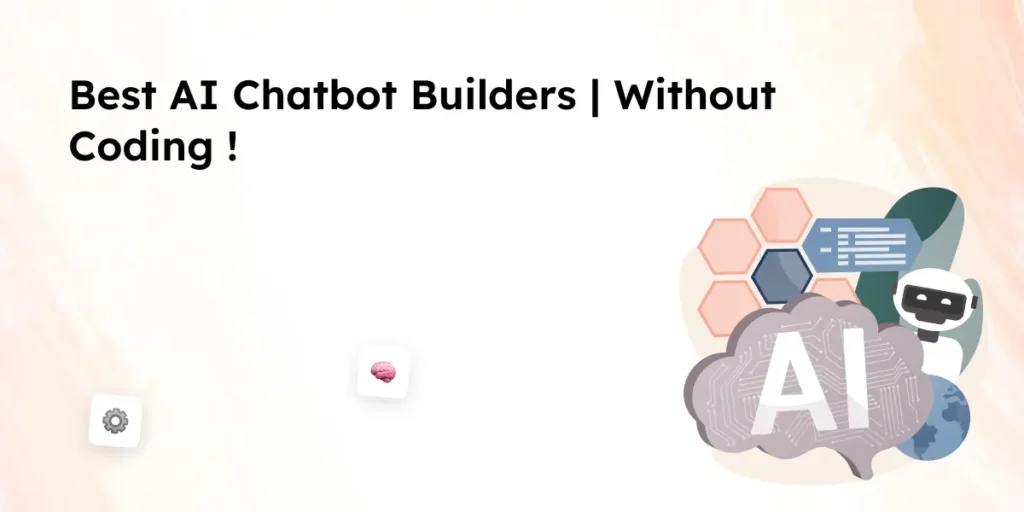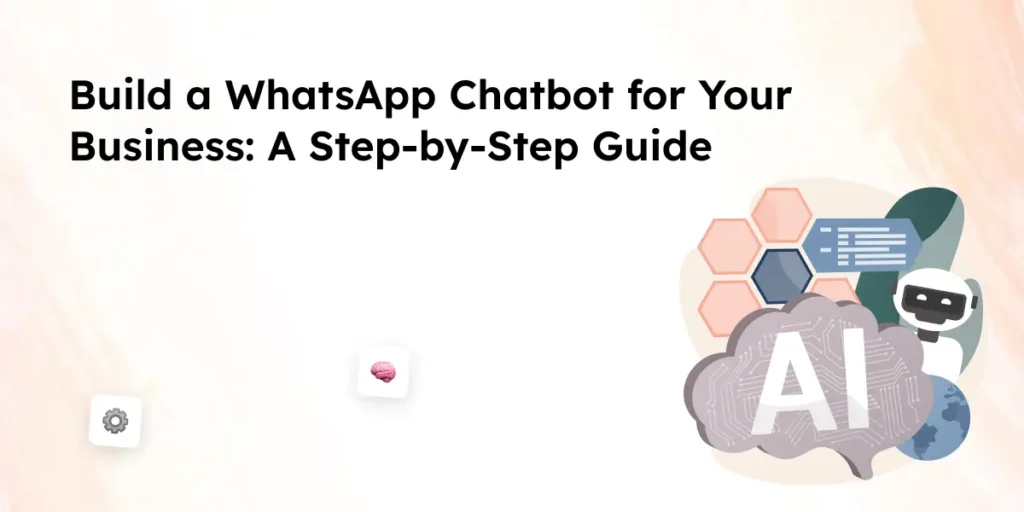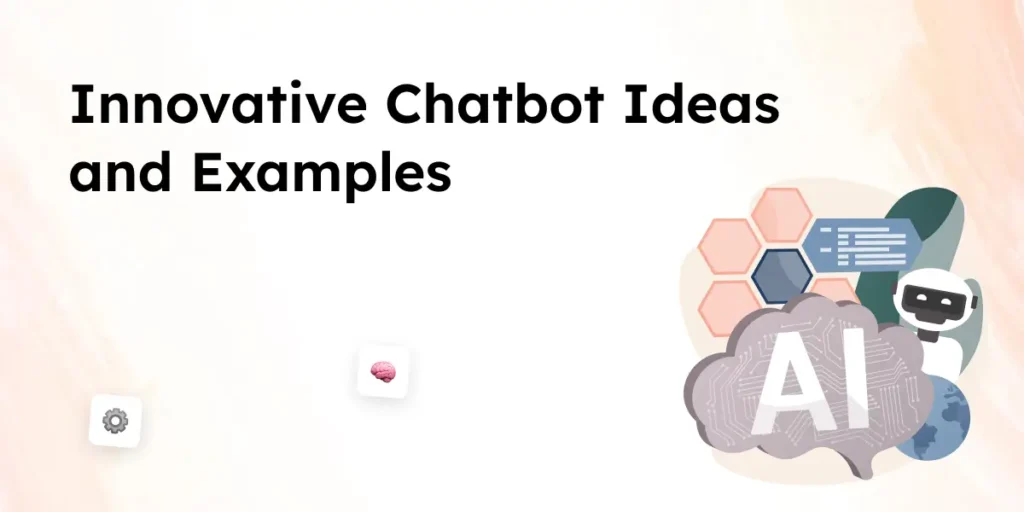Looking for the best open-source chatbot framework? If you’re handling hundreds of customer queries daily, an AI-powered chatbot can save you time and improve efficiency. But with so many frameworks available, choosing the right one can be tricky.
Some chatbot frameworks are AI-driven, helping you build advanced, self-learning bots. Others focus on rule-based automation, offering a simple way to respond to common questions. Whether you need a chatbot for customer support, sales, or internal automation, this guide will help you find the best fit.
In this article, you’ll discover:
- The top nine open-source chatbot frameworks and how they compare.
- Real-world examples of how businesses use these chatbots.
- A comparison table to help you make an informed decision.
- A checklist for choosing the right chatbot for your needs.
By the end, you’ll know which chatbot framework fits your business—whether you’re looking for deep AI-powered conversations or a simple no-code solution.
What is a Chatbot Framework?
A chatbot framework is a set of tools that help developers build, train, and deploy chatbots. It provides the foundation for a chatbot to understand user messages, process them, and generate appropriate responses.
There are two main types of chatbot frameworks:
- Open-source frameworks – These are free to use and allow developers to modify the code as needed. They offer flexibility, customization, and full control over data.
- Proprietary frameworks – These are owned by companies and often require a subscription. They come with built-in AI models and integrations but may have limited customization.
Why Choose an Open-Source Chatbot Framework?
For businesses looking to automate customer interactions, open-source chatbot frameworks offer several advantages:
- Cost-effective – No licensing fees, making them ideal for startups and small businesses.
- Customizable – Developers can fine-tune models and add unique features. Using an open-source framework allows businesses to customize a chatbot based on its essential features.
- Data privacy – Unlike proprietary solutions, open-source frameworks allow businesses to keep full control over user data.
- Community-driven improvements – Many open-source frameworks have active developer communities that continuously improve the technology.
Now, let’s explore the top nine open-source chatbot frameworks and how they compare.
9 Best Open Source Chatbot Frameworks Reviewed
Choosing the right chatbot framework depends on your business needs, technical expertise, and preferred integrations. Below is a breakdown of nine of the best open-source chatbot frameworks, their features, and why they might be the right choice for you.
1. Rasa
Rasa is a popular open-source chatbot framework designed for developers who want complete control over their AI assistant. It has two main components: Rasa NLU for natural language understanding and Rasa Core for managing conversations.
Example Use Case
A customer support chatbot that handles complex queries, remembers user preferences, and provides personalized responses over multiple interactions.
Why Choose Rasa?
- Best for businesses that need advanced AI-driven conversations.
- Supports on-premise deployment for better data privacy.
- Ideal for customer service bots that need context awareness.
2. Botpress
Botpress is an open-source chatbot framework with a modular design, making it easy to customize. It comes with a visual conversation builder, making it accessible for both developers and non-technical users.
Example Use Case
An FAQ bot for an eCommerce website that helps users navigate products, returns, and customer inquiries.
Why Choose Botpress?
- No coding required for basic chatbot setups.
- Provides a visual interface for conversation design.
- Ideal for businesses looking for a quick and simple chatbot solution.
3. Microsoft Bot Framework
This is a powerful chatbot framework that integrates with various platforms like Microsoft Teams, Skype, Slack, and Facebook Messenger. It supports advanced AI functionalities and connects with Azure AI services.
Example Use Case
A customer service bot that integrates with a company’s CRM to fetch customer details and provide personalized support.
Why Choose Microsoft Bot Framework?
- Best for businesses already using Microsoft services.
- Provides omnichannel support across multiple chat platforms.
- Supports voice and text interactions.
4. Wit.ai
Acquired by Facebook, Wit.ai is a natural language processing platform that helps developers build chatbots and voice assistants. It learns from conversations and improves over time.
Example Use Case
A voice-enabled customer support chatbot that allows users to navigate a help center using spoken commands.
Why Choose Wit.ai?
- Strong NLP capabilities for understanding user intent.
- Best for businesses that want voice-based chatbots.
- Free to use, with easy Facebook Messenger integration.
5. Botkit
Botkit is an open-source chatbot development framework that helps developers build bots for platforms like Slack, Messenger, and Microsoft Teams. It offers a wide range of plugins to enhance functionality.
Example Use Case
A Slack bot that helps customer service teams track support tickets, set reminders, and automate internal workflows.
Why Choose Botkit?
- Great for internal team collaboration bots.
- Best for developers looking for a code-centric framework.
- Comes with pre-built templates for Slack and Messenger.
6. Dialogflow
Dialogflow, powered by Google, provides advanced natural language understanding and supports chat and voice-based interactions. It can be integrated into websites, apps, and voice assistants.
Example Use Case
A chatbot for an online banking service that helps customers check their account balance, make transactions, and reset passwords.
Why Choose Dialogflow?
- Best for Google integrations and AI-powered chatbot automation.
- Supports multilingual chatbots.
- Works across multiple messaging platforms.
7. IBM Watson Assistant
IBM Watson Assistant is an AI-powered chatbot framework designed for enterprise-level solutions. It helps businesses automate customer support while maintaining data security.
Example Use Case
A chatbot for a healthcare company that helps patients book appointments, check symptoms, and receive health-related advice.
Why Choose IBM Watson Assistant?
- Best for businesses needing AI-powered customer support.
- Provides enterprise-level security for sensitive data.
- Offers pre-trained AI models for various industries.
8. Amazon Lex
Amazon Lex is a chatbot development platform that powers Alexa and allows developers to build voice and text-based conversational interfaces. It offers deep learning-powered automatic speech recognition and natural language understanding.
Example Use Case
A voice-activated shopping assistant for an eCommerce website that helps users search for products and place orders.
Why Choose Amazon Lex?
- Best for businesses that want voice and text integration.
- Works seamlessly with AWS cloud services.
- Provides AI-driven chatbot experiences similar to Alexa.
9. ChatterBot
ChatterBot is a Python-based chatbot library that uses machine learning to generate responses based on existing conversations. It’s simple to use and trains itself with provided datasets.
Example Use Case
An AI-powered chatbot that learns from past customer interactions and improves responses over time.
Why Choose ChatterBot?
- Best for developers looking for a simple Python chatbot.
- Ideal for businesses wanting a self-learning chatbot.
- Easy to integrate with Django and Flask applications.
Comparison Table: Best Open Source Chatbot Frameworks
| Framework | Best For | AI & NLP Support | Easy Integration | Voice Support |
|---|---|---|---|---|
| Rasa | Advanced AI-driven chatbots | Yes | Yes | No |
| Botpress | No-code chatbot building | No | Yes | No |
| Microsoft Bot Framework | Enterprise & omnichannel bots | Yes | Yes | Yes |
| Wit.ai | Voice-enabled chatbots | Yes | Yes | Yes |
| Botkit | Developer-friendly chatbots | Yes | Yes | No |
| Dialogflow | AI-powered chatbots | Yes | Yes | Yes |
| IBM Watson | Enterprise AI solutions | Yes | Yes | Yes |
| Amazon Lex | Voice & text AI chatbots | Yes | Yes | Yes |
| ChatterBot | Self-learning chatbots | Yes | Yes | No |
How to Choose the Right Chatbot Framework
Picking the right chatbot framework depends on your business needs, technical expertise, and future scalability. Here’s a checklist to help you decide.
1. Define Your Chatbot’s Purpose
Ask yourself: What problem is the chatbot solving? If it’s for customer support, you’ll need a framework that integrates well with ticketing systems. If it’s for internal automation, something lightweight might be enough.
2. Consider Technical Expertise
Some frameworks, like Rasa and Botkit, require programming skills. Others, like Botpress and Dialogflow, offer visual builders that make chatbot creation easier for non-developers.
3. Look at Integration Options
If you’re already using tools like Zendesk, Freshdesk, or Salesforce, make sure the chatbot framework can integrate smoothly. Microsoft Bot Framework, Dialogflow, and IBM Watson Assistant provide strong integration options.
4. Check Scalability
Will the chatbot be handling a few dozen queries per day or thousands? Rasa and Amazon Lex are good choices for businesses expecting high volumes and complex conversations.
5. Evaluate Natural Language Processing Capabilities
If your chatbot needs advanced language understanding, frameworks like Rasa, Dialogflow, and Wit.ai provide strong NLP support. If you just need a rule-based chatbot for FAQs, Botpress or ChatterBot may be enough.
6. Assess Security and Data Privacy
For businesses dealing with sensitive customer information, frameworks that offer on-premise hosting, like Rasa and IBM Watson, provide better data security than cloud-based solutions.
7. Review Support and Community Resources
A strong developer community means better documentation, troubleshooting, and long-term support. Rasa, Botpress, and Botkit have large active communities.
Frequently Asked Questions (FAQ) :
Converzation AI, Desku and Intercom are among the easiest to use because they offer a visual interface for chatbot creation. Desku is great for users who prefer a no-code solution, while Intercom provides strong natural language understanding.
Rasa and Microsoft Bot Framework are good choices for customer support teams that need AI-driven, personalized conversations. They integrate well with CRM and ticketing systems like Desku, Converzation AI, Zendesk and Salesforce.
Security depends on how the chatbot is deployed. Rasa and Botpress allow on-premise hosting, which provides better control over data privacy. Cloud-based solutions like Dialogflow and Amazon Lex require businesses to trust third-party data storage.
Conclusion
Choosing the right chatbot framework depends on your needs, technical expertise, and long-term goals.
- If you need advanced AI-powered conversations, Rasa is a strong choice.
- If you’re looking for a no-code chatbot builder, Botpress is a great option.
- For businesses using Microsoft products, Microsoft Bot Framework integrates seamlessly.
- If you need a voice-enabled chatbot, Wit.ai or Amazon Lex are the best picks.
Each of these chatbot frameworks has its strengths, so consider your integration requirements, scalability, and ease of use when making a decision.
Need help choosing the right chatbot for your business? Reach out to discuss the best solution for your needs.



